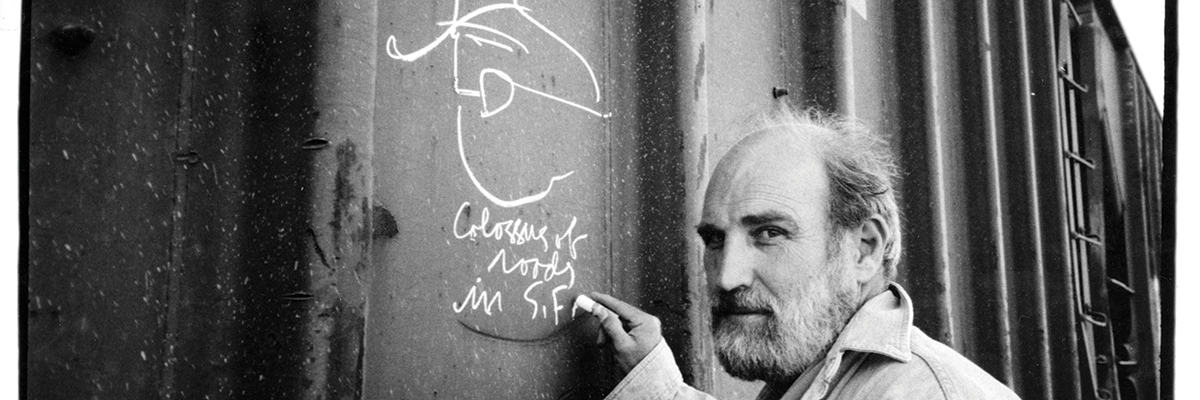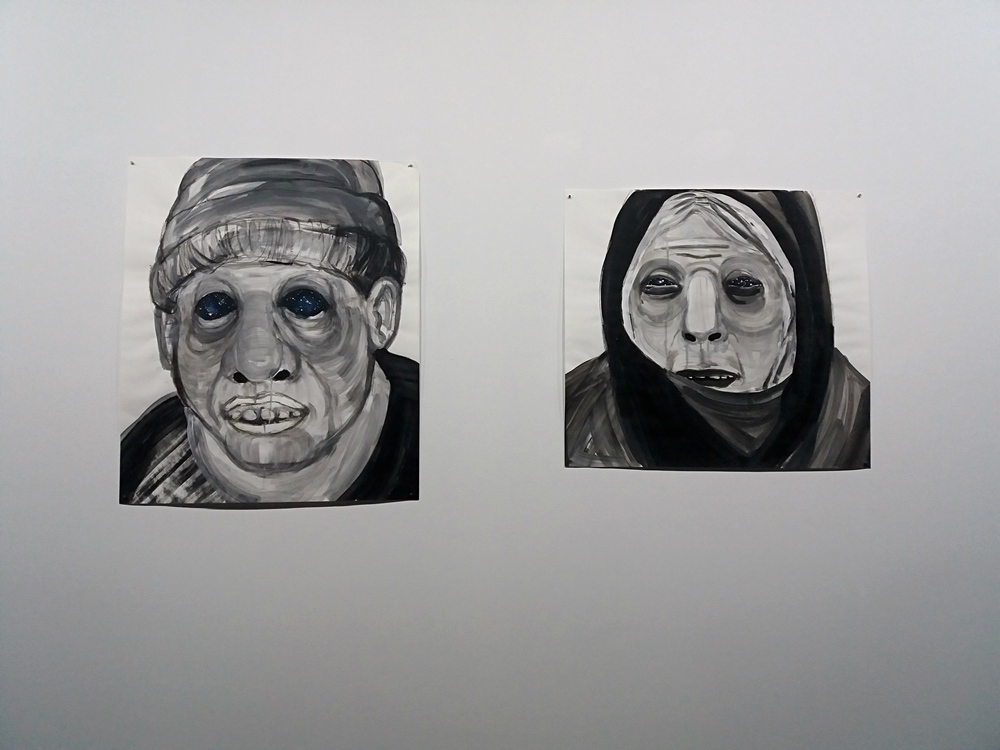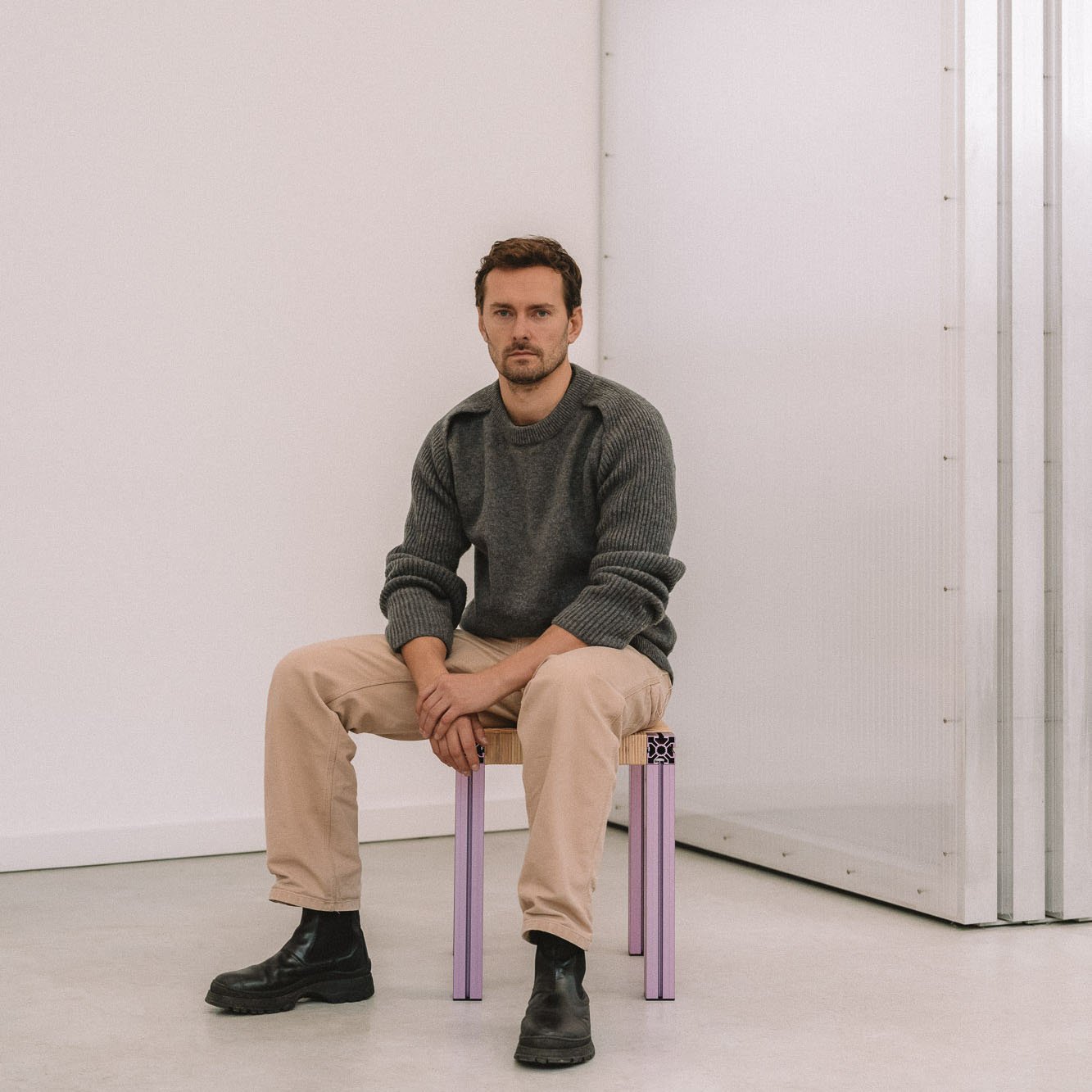You Make Me Iliad
2010 - Film & Video (Film & Video)
14:49 minutes
Mary Reid Kelley
Situated in German-occupied Belgium at the end of World War I, Y ou Make Me Iliad by Mary Reid Kelley focuses on the story of two. characters: a Belgian prostitute working near the frontlines and a young German soldier charged with monitoring the brothels. Harboring literary aspirations, the soldier goes in search of material to complete his novel. The material he believes he needs is sex. His encounter with the prostitute plays out over one hundred rhymed couplets densely packed with puns, language allusions, double entendre, and verbal winks, Reid Kelley reveals the unbalanced power dynamics and circumscribed gender roles of the war. The complexity of the script is as striking as it is frustrating in its opacity. Any “complete” meaning or connection is obfuscated as highlighted by the figures’ blocked eyes and the two-dimensional effect of their costumes, props, and makeup. Reid Kelley’s interest in this time period goes back to her graduate work at Yale University where she visited memorials and graves of men who left university to enlist during the war. Struck by how few first-hand accounts of women she was able to uncover, her videos often reconstitute experiences that would have otherwise been lost to history. You Make Me Iliad playfully appropriates this period to reflect that the status of women has not changed. Modern prevailing issues such as utopian ideologies and women’s liberation are as prevalent now as they were in the past.
Drawing from literature, plays, and historical events, Mary Reid Kelley makes rambunctious videos that explore the condition of women throughout history. They sardonically critique the view that recent social progress has resolved the unequal standing of women in society. Her work often involves intensive research and critical re-assessments of archetypal historical narratives—scholarship delivered as highly structured poetic verse, which serves as dialogue filled with contemporary cultural references. Her characters leap promiscuously through history and mythology, emphasizing moments of flux in gender roles and social structures. Working with videographer Patrick Kelley, Reid Kelley’s characters are usually all performed by her, disguised in elaborate costuming and makeup. They traverse animated and live-action landscapes created from the artist’s drawings and paintings. Initially trained as a painter, Reid Kelley’s stylized black-and-white visuals recall the crude aesthetics of early animation and the lo-tech look of amateur film. Teamed with her lexically complex scripts rife with historical references and wordplay, Reid Kelley’s works gesture to the instability of language and its role in history.
Colors:
Related works sharing similar palette

© » ARTS EQUATOR
ArtsEquator's Top 10 Picks at the Performing Arts Meeting 2019 | ArtsEquator Thinking and Talking about Arts and Culture in Southeast Asia Articles José Maceda, Cassettes 100, 1971, Photo by Nathaniel Gutierrez, Courtesy of UP Center for Ethnomusicology and Ringo Bunoan January 10, 2019 Established in 1995, the Tokyo Performing Arts Market (TPAM) was created to be a platform to network Japanese artists with producers and funders...

© » SLASH PARIS
Morvarid K — This too Shall Pass — Galerie Bigaignon — Exposition — Slash Paris Connexion Newsletter Twitter Facebook Morvarid K — This too Shall Pass — Galerie Bigaignon — Exposition — Slash Paris Français English Accueil Événements Artistes Lieux Magazine Vidéos Retour Morvarid K — This too Shall Pass Exposition Photographie Vue de l’exposition Morvarid K, This too Shall Pass, 2023 © D...

© » KADIST
Nidhal Chamekh
2016Nidhal Chamekh made the first drawings of the ongoing series Mémoire Promise in 2013...

© » ARTS EQUATOR
Transgression, triggers, and the thousand cuts of “Blunt Knife” | ArtsEquator Thinking and Talking about Arts and Culture in Southeast Asia Articles Photo courtesy of the artist June 25, 2019 By Corrie Tan (2,700 words, 13 -minute read) Content Warning: Mentions of a sexual relationship involving a teenager This response contains major spoilers for Blunt Knife by Eng Kai Er and A Doll’s House by Theatre of Europe...

© » BROOKLYN STREET ART
buZ Blurr, One Telling of the “Origin Story” at Straat Museum Amsterdam | Brooklyn Street Art BROOKLYN STREET ART LOVES YOU MORE EVERY DAY In the shifting culturescapes of urban contemporary art, STRAAT Museum’s latest exhibition, “Moniker: An Origin Story,” emerges as a poignant narrative that bridges the transient heritage of hobo monikers with the vibrant pulse of today’s street art scene...

© » SLASH PARIS
Morvarid K — This too Shall Pass — Bigaignon Gallery — Exhibition — Slash Paris Login Newsletter Twitter Facebook Morvarid K — This too Shall Pass — Bigaignon Gallery — Exhibition — Slash Paris English Français Home Events Artists Venues Magazine Videos Back Morvarid K — This too Shall Pass Exhibition Photography Vue de l’exposition Morvarid K, This too Shall Pass, 2023 © D...

© » THE RE:ART
Lea Rasovszky - Dig the Inbetween - The re:art Lea Rasovszky – Dig the Inbetween book launch On March 17th, 2017, Lea Rasovszky launched her book Dig the Inbetween, a collaboration with graphic designer Larisa Sitar and curator and art critic Diana Marincu , together with a one-night only exhibition at Mobius Gallery in Bucharest...

© » KADIST
Nikita Kadan
2013Ukraine is under tension due to the politics of President lanoukovitch since 2010...

© » KADIST
Carole Douillard & Babette Mangolte
2018Following Bruce Nauman’s seminal performance Walking in an Exaggerated Manner Around the Perimeter of a Square (1967) – which sees the artist carefully trace a small delimited area of his studio exaggerating the movements of his hips as he places one foot in front of the other – Idir reproduces these performative gestures in Algiers, Algeria...

© » KADIST
Matt Mullican
2018Mullican’s Stick Figure Drawings depict characters reduced to their most basic graphic representation...

© » KADIST
Eileen Quinlan
2016Eileen Quinlan’s abstracted images, like Swipe , rely on the manipulation of photographic materials inside the studio itself, and reject the exterior world for complex interrogations of the medium....

© » KADIST
Uriel Orlow
2016The series The Memory of Trees is specifically about trees, and what trees have witnessed in South Africa: for example, trees that were used as locations for slave trading, or trees that was during the anti-Apartheid struggle as a kind of identifier for a safe house for activists who were fleeing from security forces...








